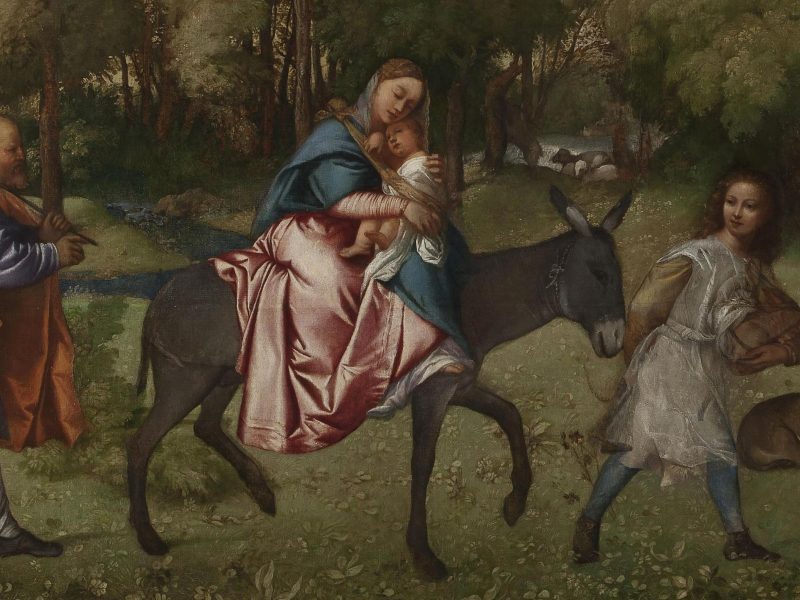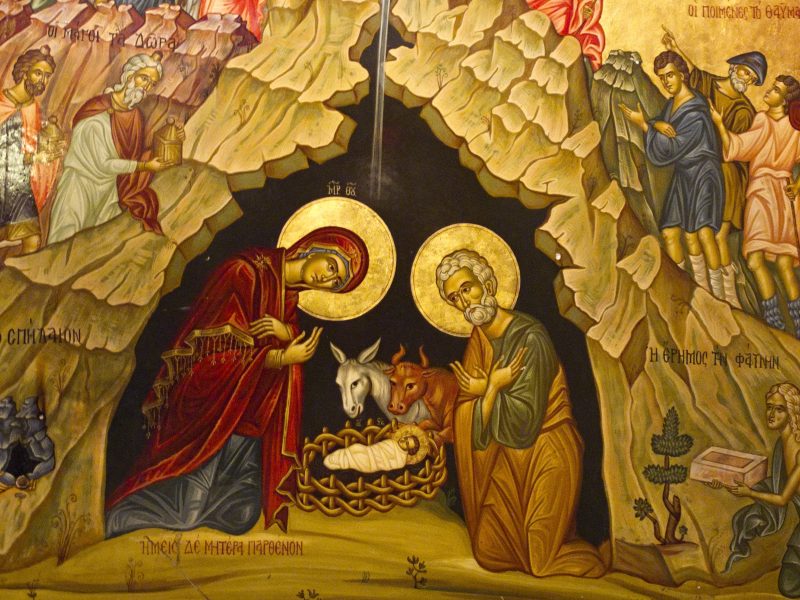
Seriously
Good Friday. Fr John Patrick Kenrick preaches on the meaning of the Cross.
Each of the accounts of Jesus’s passion is a tightly knit drama within the broader gospel narrative. We feel drawn into the action. The liturgy may even encourage us to act out the drama, to see ourselves, for example, as part of the crowd. St John’s account is perhaps the most interesting and yet it retains something of the simplicity of the other accounts. In the context of John’s rich gospel narrative his passion story stands out almost in relief. Take out the references to scriptures that have been fulfilled and there is something quite stark about his account. In fact, whoever the ‘author’ was, it really does read like an eye-witness account. The story is so ordinary, so matter of fact. The elements of this story are ones with which humanity is familiar – a betrayal, a trial that is a mockery of justice and the casual torture and killing of a man. For that has been the experience of countless human beings as far back as our collective memory goes.
It’s the small details that ring so true. The bungled defence with St Peter cutting off someone’s ear, the slap on the face from a synagogue official, the chief priests refusing to enter the Praetorium, Pilate’s obvious irritation with the whole business despite the fact that a human life is at stake. It is all reminiscent of what we know can happen in this world. The lies, the cruelty and the pain. St John even tells us the weight of the mixture of myrrh and aloes with which the body of Christ is anointed. The priests are more interested in the notice pinned to the cross – it offends their sensibilities. The soldiers are more intent on dividing the victim’s clothes. Just three women and a boy are witnesses to the execution. The crowd have already lost interest. As far as they are concerned it’s all over. But we know that this was not the end but rather the beginning.
Isaiah predicted it all with unsettling accuracy. The fact that many of the onlookers would have assumed that this was some sort of punishment from God whereas in fact ‘He was pierced through for our faults, crushed for our sins’.
In human terms the crucifixion suggests that Jesus’s mission ends in complete failure. The crowd see the crucifixion and death of an innocent man, but what they cannot see is the victory over suffering and death that this represents. The moment of apparent failure is in fact the moment of triumph. In the words of the Letter to the Hebrews, the supreme high priest has become for all who obey him the source of eternal salvation.
And so we come together on this Good Friday not to weep and mourn another death – although our sins may weigh heavily on our conscience – because there is no tragedy here. For you and I this is what victory looks like. The calm acceptance of the Father’s will which becomes the gateway into heaven for us all.
Jesus’s death is solemn – but there is no tragedy as the lesson of God’s love for us begins to sink in.
A philosopher once said that it is an insult to God to believe in him for if he existed he would be a very cruel God. Atheists, he said, are the ones who have taken God seriously. There are many people who think this way. The world seems too cruel a place and God too remote. But the crucifixion proclaims that it is man who is cruel, not God, and that God could not have been closer to human experience.
That philosopher is right about one thing – we haven’t yet begun to take God seriously; but this death shows that God has very definitely taken us seriously. And so the silence of the tomb must be followed by a voice, and that voice should be ours – to proclaim to those without hope that there is hope, to convince the unloved that they are loved, to assure sinners that they can be forgiven; and not to rest in our efforts until the whole world hears the truth – that never was humanity taken so seriously as on this day, when Jesus the Son of God willingly suffered and died to save us from our sins.
Readings: Isaiah 52:13-53:12 | Hebrews 4:14-16,5:7-9 | John 18:1-19:42
Image: detail from the Crucifixion by Léon Florentin Bonnat (1833-1922) (public domain)



Maria Laidlaw
Not to weep or mourn.. I wonder what I would have done, in that crowd? Jesus told the women not to mourn for Him. What about His mother?
At the slightest injustice concerning my sons, I am spitting feathers.
Frances Flatman
Like
Rudolf Carpanini
Thank you, Father, for the effective simplicity of your words. You have conveyed the meaning of the Crucifixion with a rare simplicity, which is all the more effective for being so. You have joined the Crucified to all humanity in his suffering, in a way that touches one’s heart.
Thank you once more, and wishing you a serene and joyous Easter.
Catherine
It is a very hard truth, nonetheless, and so difficult to comprehend. It makes total sense what you are saying, but hard. I have been thinking the same of Maria Laidlaw (comment above). How did Mary and John manage to watch it all and not scream, cry out or try to stop it all? They must have had a very great love and understanding and acceptance of Jesus. It’s almost impossible to grasp such love.